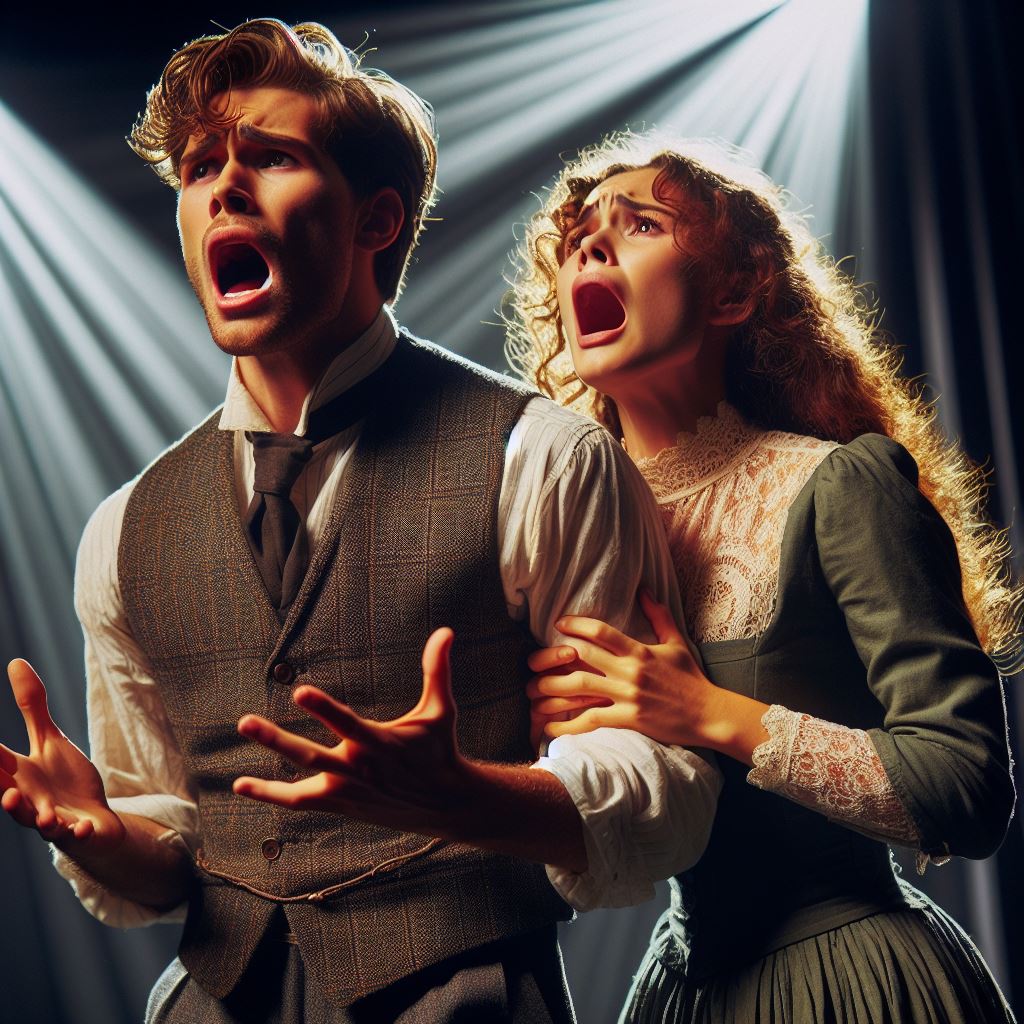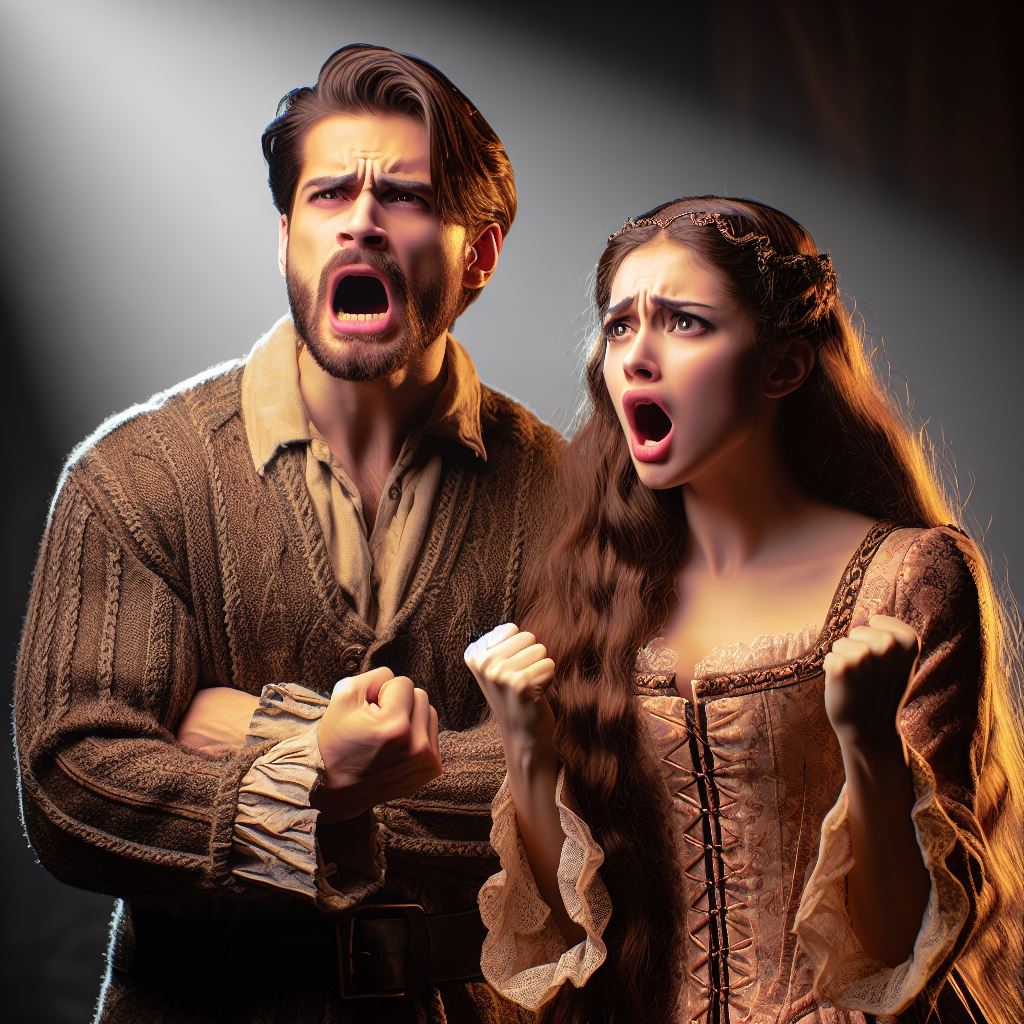Introduction
Historical roles are a significant aspect of the acting industry, posing unique challenges for New Zealand actors.
These roles hold great importance as they allow actors to portray the past, bringing history to life on screen and on stage.
Delving into historical roles opens up a world of exploration and creativity for actors, captivating audiences with their storytelling abilities.
Imagine the thrill of stepping into the shoes of a renowned historical figure, breathing life into their experiences and emotions.
New Zealand has a rich history, and historical roles provide an opportunity for actors to connect with their country’s past and preserve its cultural heritage.
From the struggles of early settlers to the battles fought by Māori warriors, historical roles give actors a chance to shed light on forgotten stories and bring them to the forefront.
With each historical role, actors face the challenge of understanding the context, dialect, and mannerisms of the time, adding depth and authenticity to their performances.
By immersing themselves in extensive research and honing their craft, New Zealand actors tackle these challenges head-on, creating captivating portrayals that resonate with audiences.
So, let us delve into the world of historical roles and explore the significant challenges faced by New Zealand actors in bringing the past to life.
Historical Roles in NZ
The significance of historical roles in New Zealand’s film and theater industry
Historical roles play a significant role in New Zealand’s film and theater industry.
These roles provide a glimpse into the country’s rich history and cultural heritage.
Iconic historical roles portrayed by NZ actors
NZ actors vividly portray iconic historical figures, bringing them to life on screen and stage.
Jamie McCaskill exemplified Rewi Maniapoto, a Maori warrior chief, in “The Dead Lands.
” McCaskill’s portrayal showcased the bravery and resilience of Maori warriors during the New Zealand Land Wars.
Tama Poata portrayed Honikaha Huata in “Utu,” based on a real-life Maori leader resisting British colonization.
These roles highlight indigenous perspectives and resistance against colonial forces.
NZ actors frequently portray key figures from European history, providing balanced representation.
Cliff Curtis portrayed Dutch explorer Abel Tasman in “The Navigator,” shedding light on early European exploration in New Zealand.
Historical roles allow NZ actors to explore cultural roots and identity.
Antonia Prebble’s portrayal of Loretta West in “Outrageous Fortune” brings a local story to a wider audience.
Through performances, NZ history is shared globally, as seen in “Once Were Warriors” and “The Piano.”
Rena Owen’s role as Beth Heke challenges and showcases versatility in “Once Were Warriors.”
Historical roles serve as a platform for examining social and political issues.
“Rain of the Children” combines historical elements with present-day interviews, offering a unique perspective on NZ’s past.
Representation of historical roles fosters national pride, reflecting on heritage and appreciating NZ actors’ talent.
These performances preserve and promote NZ’s cultural legacy, shaping the film and theater industry.
Iconic performances by NZ actors bring historical figures and stories to life, celebrating NZ history.
Through roles, NZ history is represented, fostering national identity and pride.
Read: NZ Artists’ Paths: Education to Success
Challenges Faced by NZ Actors in Historical Roles
When it comes to portraying historical roles, New Zealand actors face unique challenges that require extensive research and preparation.
They have to embody the essence of a different time period and culture, which can be quite difficult. Let’s delve into the specific challenges they encounter:
Research and Preparation
- Extensive research is essential to accurately portray historical characters. Actors must dig deep into historical sources, including books, diaries, letters, and photographs.
- They need to understand the specific time period, historical events, and social norms to bring authenticity to their performances.
- Thorough research also involves studying the accents, dialects, and speech patterns of the era, ensuring that they speak and sound like people from that time.
- Learning about the political and cultural contexts of the period helps actors grasp the motivations and mindset of their characters.
Embodying a Different Time and Culture
- Actors must put themselves in the shoes of people from a different era, understanding their values and beliefs.
- This includes adopting mannerisms, behaviors, and physicality that are representative of that time period.
- They need to develop an understanding of societal roles and expectations, and how they differ from modern times.
- Embodying historical characters also requires adapting to cultural nuances and traditions, making sure they are portrayed accurately.
Physical Challenges
- Period costumes can be quite restrictive, making movement and physicality more challenging for actors.
- They may have to wear corsets, petticoats, or heavy armor, affecting their ability to perform physically demanding scenes.
- Accurate weapons and props from the era also add weight and difficulty to fight scenes and stunts.
- Physical fitness and training are crucial to ensure that actors can handle the demands of their historical roles.
Balancing Historical Accuracy and Creative Freedom
- While actors strive for historical accuracy, they also need to add their own interpretation and creativity.
- They must strike a balance between staying true to the historical character and the storyteller’s vision.
- They have to make choices regarding character development and portrayals, aligning them with the overall narrative.
- Adding depth and complexity to historical roles requires a delicate blend of research and personal artistic choices.
Overcoming Anachronisms
- Avoiding anachronisms, which are elements that do not belong to the specific time period, can be a significant challenge.
- Actors need to be cautious of their language, gestures, and references to ensure they are in line with the era.
- Modern slang or concepts that did not exist at the time can easily slip in and compromise authenticity.
- Constant awareness and attention to detail are required to maintain consistency throughout performances.
Basically, portraying historical roles in New Zealand comes with its own set of unique challenges.
From extensive research and the embodiment of a different time and culture to physical limitations and the balance between accuracy and creativity, actors must overcome various obstacles.
Their dedication and attention to detail help bring these historical characters to life and transport audiences to different eras.
Read: Grants for NZ Musicians: A Guide
Research and Preparation for Historical Roles
When it comes to portraying historical roles, actors undergo an extensive research process to ensure that they bring authenticity and depth to their characters.
This research involves delving into various resources and techniques that aid in their understanding of the context and historical background surrounding the character they are about to portray.
The Extensive Research Process
Actors recognize the importance of thorough research to accurately depict historical roles.
They start by examining written materials such as books, diaries, letters, and historical documents.
These sources provide valuable insights into the time period, allowing actors to grasp the nuances of language, social conventions, and cultural practices.
Moreover, actors often seek out experts in the field, such as historians and academics.
These professionals can offer invaluable guidance and knowledge, ensuring that the portrayal remains as accurate as possible.
These consultations also assist in querying historical inaccuracies that may arise during the creative process.
Understanding the Context and Historical Background
Developing a deep understanding of the context and historical background behind the character is essential in delivering a convincing performance.
By immersing themselves in the historical context, actors gain insights into the societal norms, political climate, and significant events that shaped their character’s experiences.
For instance, when preparing for a historical role set during World War II, an actor would delve into the historical events leading up to the war, familiarize themselves with the experiences of soldiers, and explore the impact of war on civilian life.
This comprehensive understanding allows the actor to bring authenticity and emotional truth to their performance.
Personalized Career Consulting
Unlock your potential with expert career advice tailored to your goals. Get personalized guidance and actionable steps toward your dream career in New Zealand.
Get StartedTechniques and Resources for Research
New Zealand actors have access to various techniques and resources that aid in their research process.
One approach employed is visiting museums and historical sites, immersing themselves in the physical remnants of the time period to gain a tangible connection to the past.
Additionally, technology has transformed research practices significantly.
The internet provides actors with instant access to a wealth of information, including online archives, documentaries, interviews, and historical footage.
These digital resources offer an efficient and convenient way of gathering information.
Furthermore, oral histories and firsthand accounts play a crucial role in understanding a character’s experiences.
Actors may conduct interviews with individuals who lived during the time period or read transcripts of interviews to gain insights into personal narratives.
Examples of Research Techniques Used by NZ Actors
- Visiting libraries and archives to access primary sources
- Attending lectures, seminars, and workshops conducted by historians
- Conducting interviews with experts or individuals with personal experiences
- Studying photographs, paintings, and visual representations of the era
- Engaging in physical training or learning specialized skills relevant to the role
- Collaborating with costume and set designers to create an authentic visual representation
All in all, the research and preparation process for historical roles requires actors to delve deep into the historical context, understanding the social, political, and cultural aspects that influenced their character’s lives.
By utilizing various techniques and resources, actors in New Zealand ensure that their performances are grounded in authenticity and accurately capture the essence of the past.
Read: Women in NZ Music: Rising Stars

Physical Transformations and Authenticity
The physical transformations that NZ actors undergo to accurately portray historical characters
- New Zealand actors go through rigorous physical transformations to accurately portray historical characters.
- They undergo intense fitness training to match the physical attributes of the characters they portray.
- In order to accurately portray historical characters, actors go through weight gain or loss regimes.
- NZ actors may undergo extensive body language training to mimic the mannerisms of historical figures.
- They learn specific accents or speech patterns to ensure authenticity in their portrayals.
Importance of costumes, makeup, and hairstyling in achieving authenticity
- Costumes play a crucial role in achieving authenticity as they bring historical characters to life.
- Accurate period costumes help actors and viewers immerse themselves in the historical setting.
- Makeup transforms actors by recreating the look and features of historical figures.
- Hairstyling aids in providing an accurate representation of historical fashion and trends.
- Attention to detail in costumes, makeup, and hairstyling enhances the overall authenticity of a performance.
Challenges of maintaining authenticity while still delivering engaging performances
- Actors face the challenge of balancing authenticity with delivering engaging performances to captivate audiences.
- They must find the perfect equilibrium between accurately representing history and adding their own interpretation.
- Maintaining authenticity requires extensive research and understanding of the historical context.
- Actors need to embody the essence of a historical character while still connecting with modern audiences.
- Authenticity should not impede the actor’s ability to engage emotionally with the audience.
Therefore, New Zealand actors undergo physical transformations, utilize costumes, makeup, and hairstyling to achieve authenticity in portraying historical characters.
They face the challenge of maintaining authenticity while still delivering engaging performances.
Read: NZ Music Festivals: Behind Scenes
Navigating Sensitivities and Cultural Considerations
When it comes to portraying historical roles from marginalized communities, actors face numerous sensitivities that require careful navigation.
It is crucial to address the importance of cultural considerations and consultation with relevant communities to ensure respectful and accurate portrayals.
In this chapter, we will explore these challenges, highlight successful examples, and discuss actors who have faced criticism for their performances.
Navigating Sensitivities
Portraying historical roles from marginalized communities requires actors to be aware of various sensitivities.
It is essential to approach these roles with sensitivity, respect, and a deep understanding of the community’s experiences and struggles.
Sensitivities may arise from the historical context, cultural sensitivities, or the ongoing impact of marginalization.
Actors must strive to avoid perpetuating harmful stereotypes or further marginalizing these communities.
They should undertake extensive research, consult with experts, and engage with individuals from the community to gain insights and perspectives.
This approach enables actors to provide authentic and nuanced representations, honoring the lived experiences of those they portray.
Cultural Considerations and Consultation
The consultation with relevant communities plays a pivotal role in understanding cultural considerations for historical roles.
By consulting individuals from the community being portrayed, actors can gain invaluable insights regarding nuances, customs, language, and historical accuracy.
This consultation process fosters a collaborative approach, where actors can learn from the knowledge and experiences of the community.
It ensures that performances are respectful and accurate, avoiding appropriation or misrepresentation.
Such cultural considerations are crucial in maintaining the integrity and authenticity of historical roles from marginalized communities.
Examples of Successful Portrayals
Despite the challenges, numerous actors have managed to portray historical roles from marginalized communities successfully.
Their dedication to research and consultation with relevant individuals has resulted in authentic and memorable performances.
One such example is Mahershala Ali’s portrayal of Don Shirley in the movie “Green Book.”
Ali consulted extensively with Shirley’s family members, gaining valuable insights into his life and experiences as an African-American musician.
This consultation contributed to Ali’s nuanced and critically acclaimed performance, earning him an Academy Award for Best Supporting Actor.
Another successful portrayal is by Cynthia Erivo in the film “Harriet.”
Erivo portrayed the iconic abolitionist Harriet Tubman, capturing the courage and determination of this historical figure.
Her performance garnered critical acclaim and recognition, highlighting the importance of research, consultation, and authentic representation in historical roles.
Criticism for Performances
However, not all portrayals have been met with praise and acceptance.
Some actors have faced criticism for their performances in historical roles from marginalized communities.
One such example is the controversy surrounding Scarlett Johansson’s casting as the lead character in the movie “Ghost in the Shell.”
Transform Your Career with a Professional CV and Cover Letter
Stand out to employers with an ATS-optimized resume and tailored cover letter designed to match your dream role. Let us craft your job application materials for success!
Get StartedJohansson’s portrayal of a Japanese character sparked accusations of whitewashing and cultural appropriation, as it overlooked qualified actresses from Asian backgrounds.
The controversy highlighted the importance of casting authentically and considering cultural representation in historical roles.
Another example is the criticism faced by Johnny Depp for his portrayal of Tonto in the film “The Lone Ranger.”
Depp’s portrayal perpetuated stereotypes and caricatures of Native American culture, raising concerns about misrepresentation and cultural insensitivity.
The backlash prompted discussions on the need for proper consultations and respectful portrayals of marginalized communities.
To navigate sensitivities and cultural considerations when portraying historical roles from marginalized communities, actors must engage in extensive research, consultation, and collaboration.
By approaching these roles with sensitivity and authenticity, actors can create powerful and respectful performances that honor the experiences and struggles of those they portray.
Cultural considerations and consultation with relevant communities are essential to ensure accurate and respectful portrayal, ultimately contributing to a more inclusive and informed representation of history.
Conclusion
In closing, NZ actors face numerous challenges when it comes to portraying historical roles.
They must navigate the complexities of dialects, mannerisms, and cultural nuances to ensure accuracy and authenticity.
However, their dedication to these aspects is of utmost significance.
By meticulously researching and embodying the characters, they bring history to life on the stage and screen.
It is essential for the audience to appreciate and support NZ actors in their portrayals.
They deserve recognition for their hard work and commitment to preserving and sharing the past.
Next time you witness a NZ actor in a historical role, take a moment to applaud their efforts and consider the immense value they bring to our understanding of history.
Support them by attending performances and engaging in thoughtful discussions about their work.
By doing so, we can collectively encourage and foster an environment that recognizes and celebrates the talent and dedication of NZ actors in their portrayal of historical roles.



